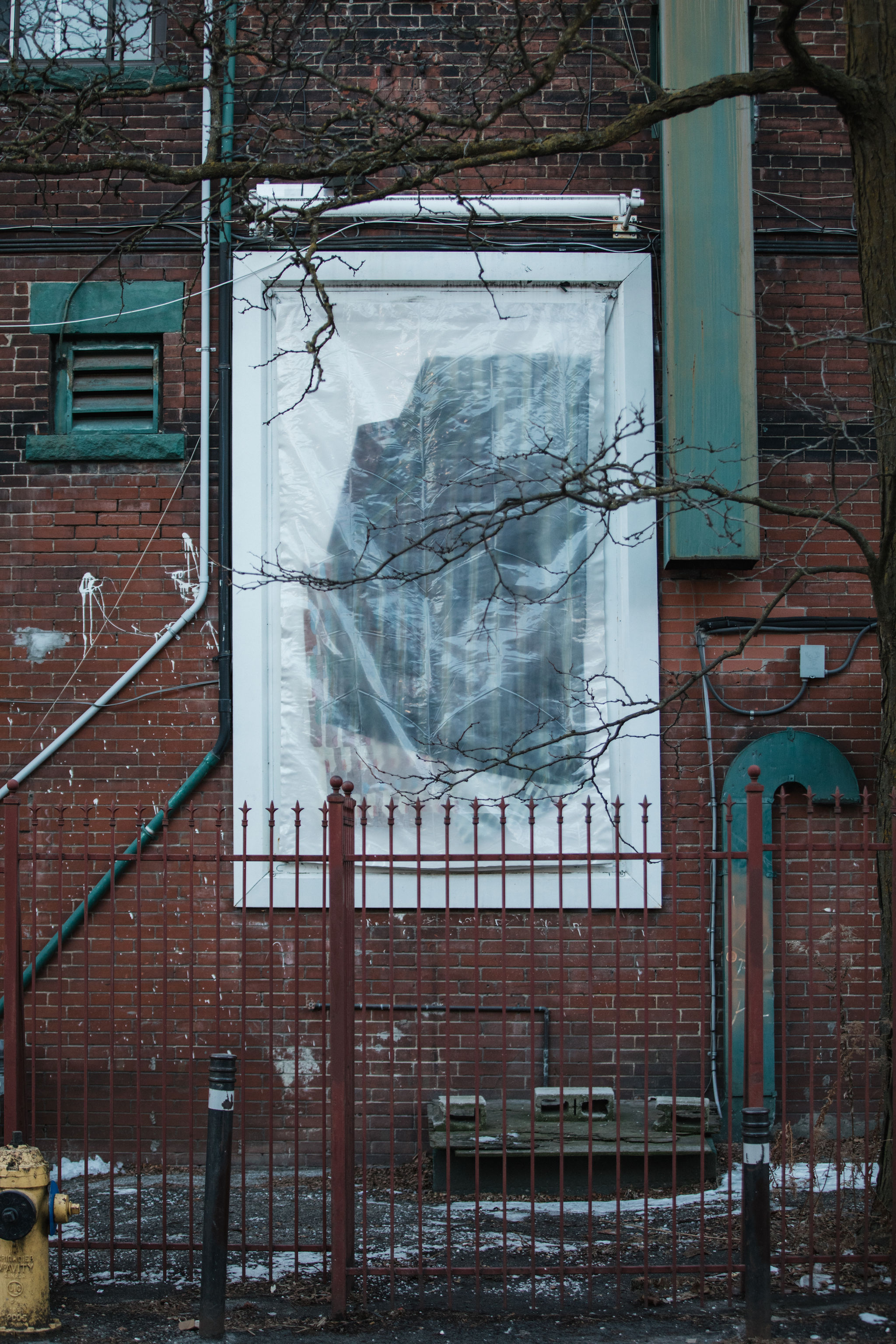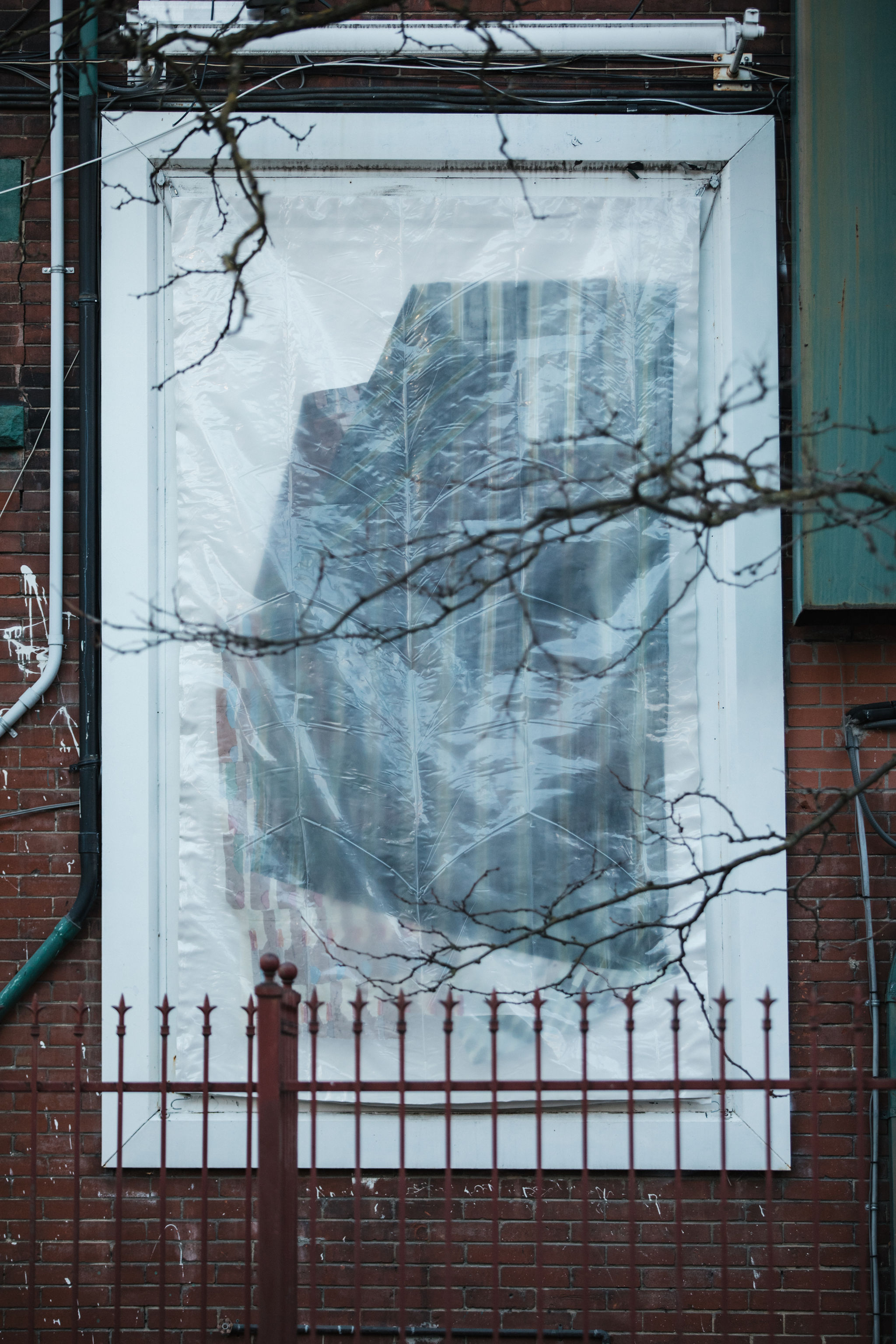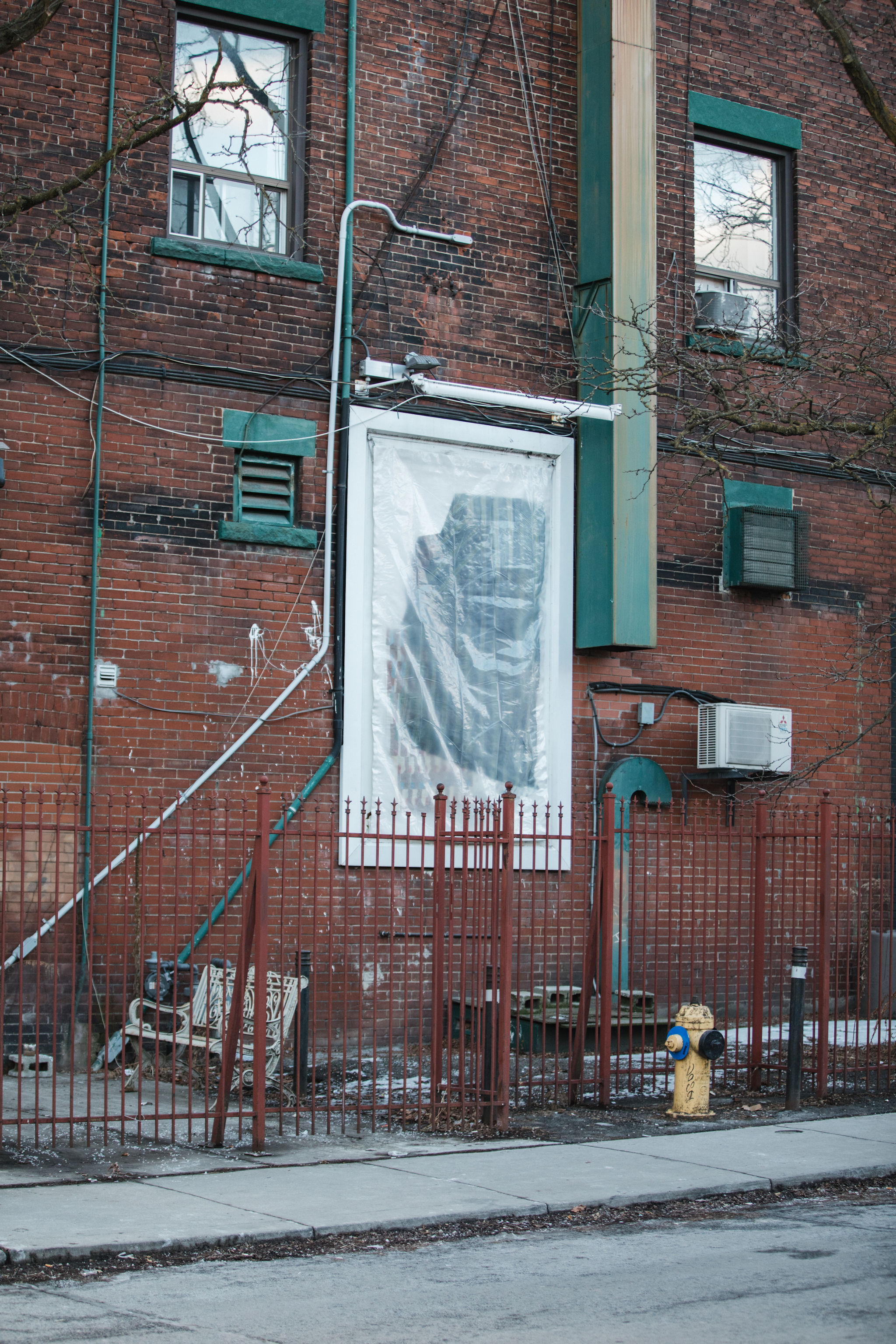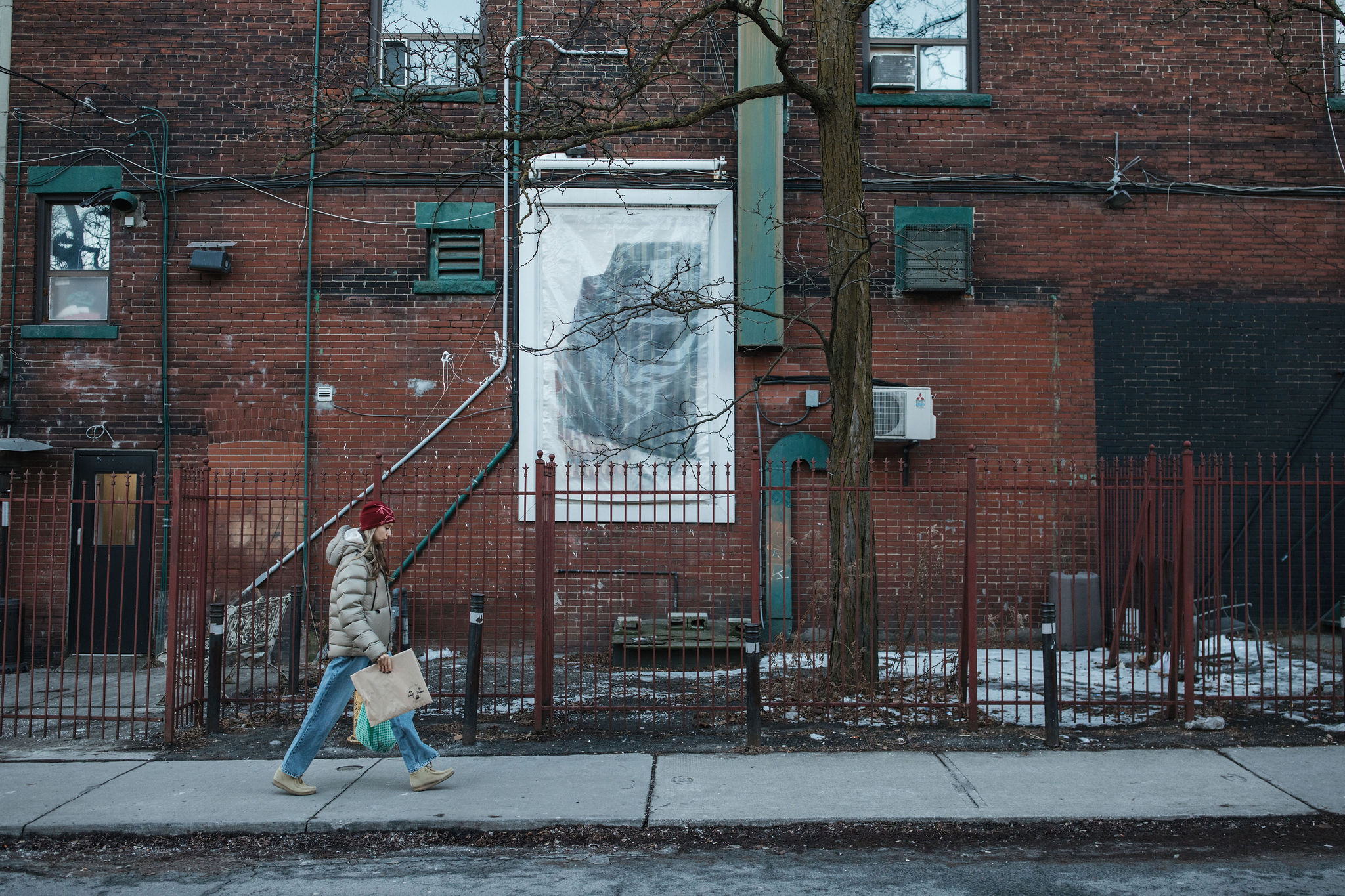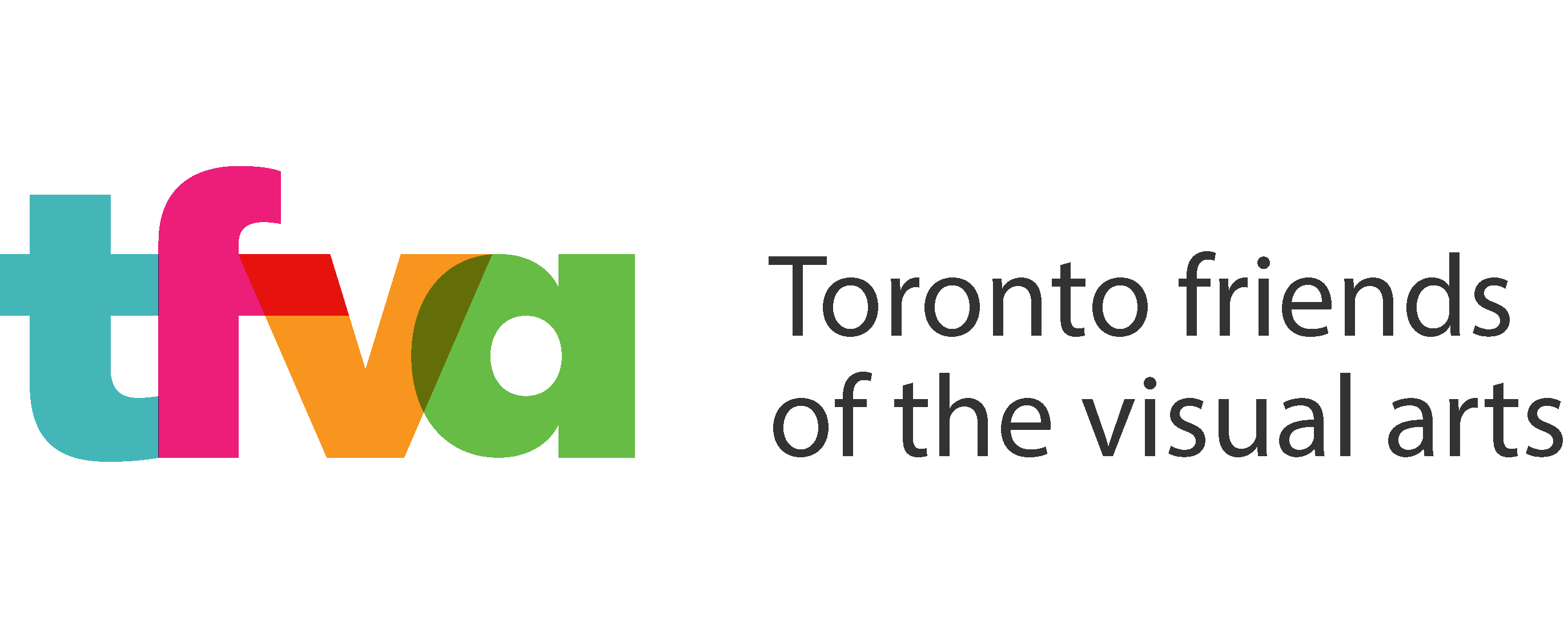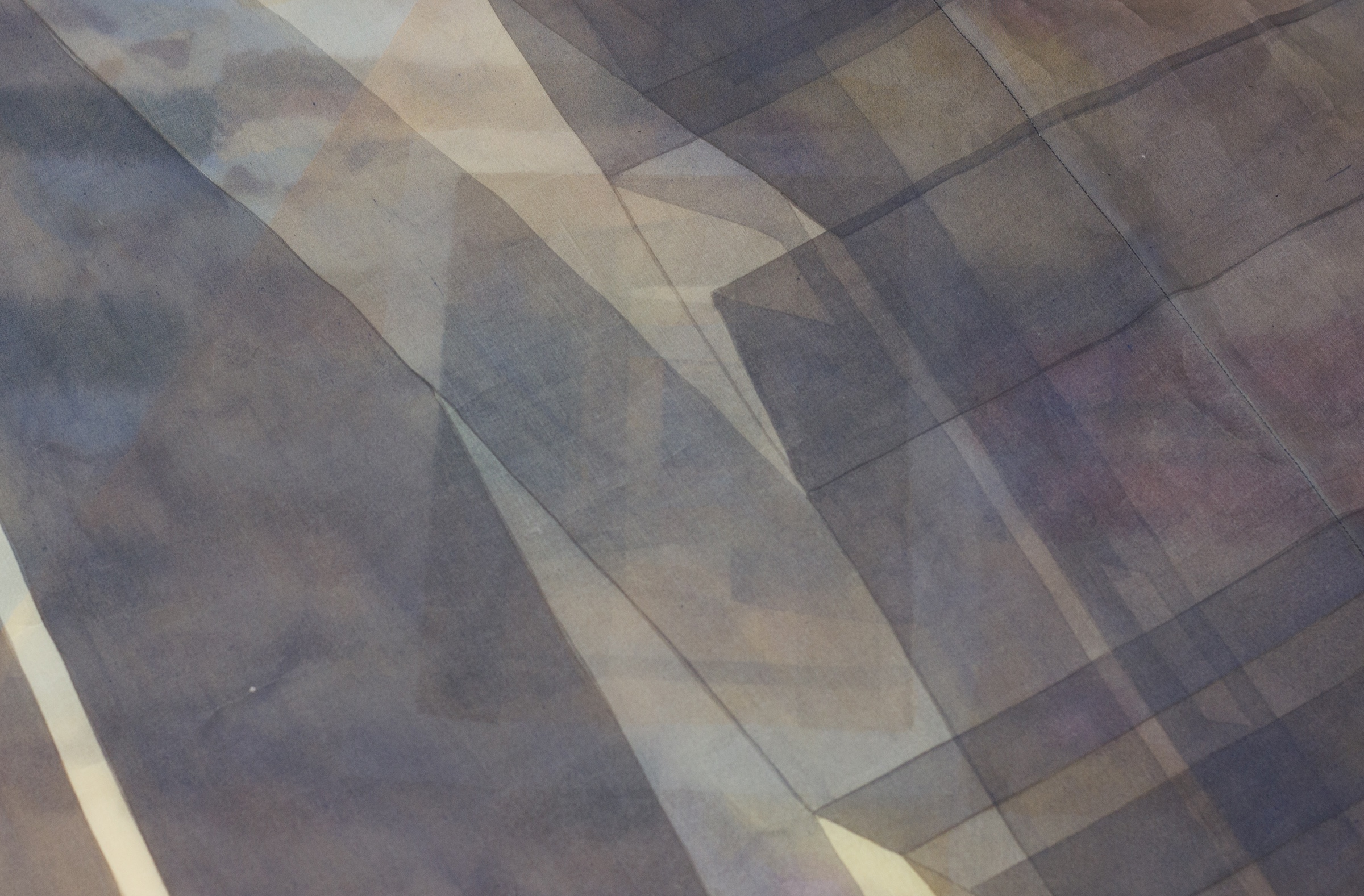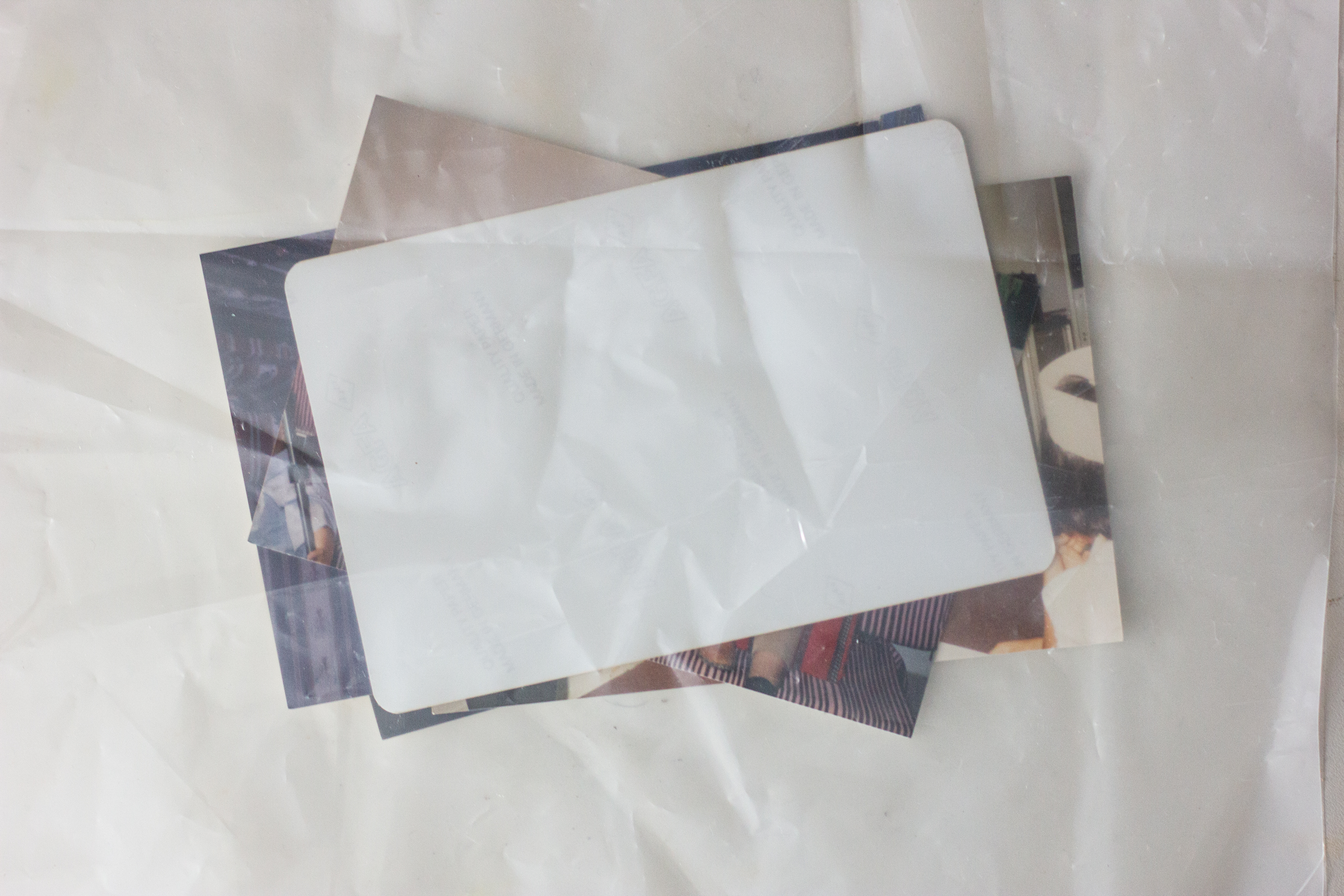SPACE invites one artist to produce a yearlong series of images for a public-facing billboard located on the east façade of Mercer Union.
Mercer Union’s SPACE billboard commission has invited artist Ella Gonzales for its 2024–25 season for a yearlong series titled, Sleeve. Gonzales, whose practice engages the endless depth yet impenetrable border of the picture plane, is a painter with a style for soft pigment washes and hard-edged geometries that soothe the eye as much as they tease the mind. The conceptual and technical interests of her works, be they wall-bound or sculptural, are twined in a deeply personal study of migration and diaspora.
Her intuitive and expertly drafted x-rays of built structures invite a dreamlike navigation of spaces, places, and times that remain inconsumable, just slightly out of reach. To these pictorial volumes, Gonzales often adds dimension by using layers, opacities, creases, and folds as an infinitely variable language for orienting to her subject. At Mercer Union, her paintings engage a new form, introducing materials like vinyl and polyethylene as companion surfaces that hold, protect, obscure, and disrupt the composition. Over the course of one year, Sleeve plays with the billboard site by iterating gestures within a single shell. Collapsed organza, Piña and Jusi silks painted with acrylics appear and accumulate, in a slow reveal of three sculptural banners or perhaps, three distinct moments in a single work always in the process of becoming.
Sleeve: A YEAR IN REVIEW is the second edition in the yearlong series, accompanying the work is a text by Heather Canlas Rigg.
Naaaninag
A container arrives for you.
It is an envelope.
You open it by tearing it.
Inside the envelope is a piece of paper.
You take the piece of paper out of the envelope.
The piece of paper is folded at two specific places so that when you unfold the piece of paper and open it up, there are three distinct sections created by the paper’s permanent creases.
The piece of paper contains a letter to you.
Dear Ella,
When I walked past your billboard at the beginning of the year the sleeve was billowing in the cold wind and I could barely see through it. The billowing effect created the image of a semi-opaque inflatable pillow. It was such a cold January evening, it seemed fitting with the lack of visibility in winter that I couldn’t see your paintings inside the sleeve. When I saw the work in the fall, it seemed to also match that season with summer’s end starting to reveal brown branches. It was such a bright day that day that the various shades of brown and green from the tree next to Sleeve and the building’s brick wall that it rests against, with its various shades of reddish-brown, amplified and simultaneously disguised your work.
I really enjoyed reading Nestor’s text from last fall. The word across is also poetic to me. It makes me think of the act of translation, the etymology of that which is carried across. I understand translation to be an important methodology and gesture in your work. Images, photographs, documents, ephemera your family has archived, digital renderings, memories and images of the homes you’ve lived in—all distilled and abstracted into your own poetic visual lexicon. I love the way you depict and alluringly interrogate the depth and physicality of architecture on a flat surface. In your paintings light seems to leak through and fill up various rooms in a way that makes each space feel physically distinct yet harmoniously one. Sometimes your work makes me think of the experience of viewing Do Ho Suh’s sculptures. Similarly to you he translates everyday spaces into places of reverence. However, your practices are also quite disparate and in many ways, opposites.
Perhaps I think of him because of how you both employ textiles. As you know, the inescapable sense of three-dimensional space in his practice comes from the fact that his works are premised on volume and in taking up space in a literal, unabashed way. Because of this he is always referred to as a sculptor. You too could be referred to as such, but, not surprisingly, the role of the painter is most commonly used in reference to your practice.
I wonder what Suh’s work looks like when it arrives at a museum for exhibition. Does it arrive like a tent—folded up and compacted, taking up as little space as possible until it is unfolded and expanded by the installation technicians? Sending and transporting artwork folded up is so practical. I guess anything that takes up less space is more practical and environmentally friendly, is it not? When you travel and pack your suitcase do you roll your clothes or do you fold them?
When I saw your work, Fill, carry, fold, in Vancouver last year, it made me think that it is, in many ways, a pragmatic work because of how easy you’ve made it to hold, view, and transport your work. Fifty of your paintings on jusi and piña silk, folded up and placed inside an elegant standing wooden box. It is an exposed drawer that lets us see the edges of your work, like Sleeve. And while we can’t see the paintings in full, the togetherness of their folds gives us insight into their colours and your meticulous palette, creating its own image. I have to imagine for myself what your paintings might look like if they were opened up and revealed for me.
If this work was on view at a museum and there was an emergency, such as a fire, a flood, or war, it would be much easier for the gallery staff—or anyone—to take your wooden box and save your folded fifty paintings in a panicked rush, than it would be to take down even a few paintings that are stretched and hung on a wall. It is also much easier to move homes when your things are folded and compacted. Migration and diasporic existences form the foundation for your practice. It is something that we share, and I admire that your work eschews being too forthcoming about this. The words you used last time we spoke are a beautiful way to describe your work: “tracking a cadence of movement.” Migratory experiences are often rooted and entangled in emergencies. Is your father’s interest in archiving and preservation something that he has always done, or did it start after your family left the Philippines? It’s wild to me that I spent immense time, energy, and resources to study photo preservation, only to realize that my mother is the best photo preservationist I have ever come across. As I am sure you know from your father’s home office, all it takes is diligence, common sense, and love.
What are you working on next?
Pagmamahal,
Heather
You fold the letter back up along the crease lines that the piece of paper already contains.
You place the folded piece of paper back into the envelope it came in.
You put it in your tin box.
— Heather Canlas Rigg
